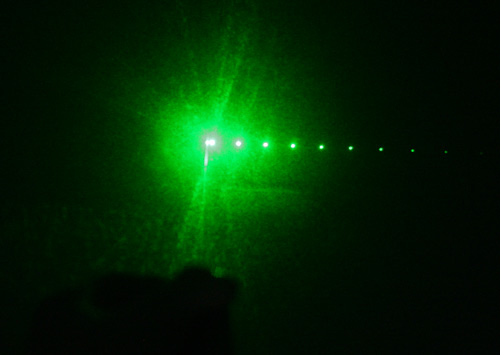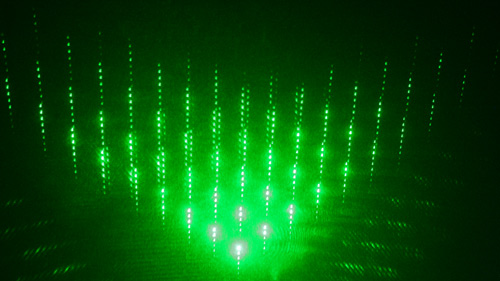I've been playing around with the little goodies to be found in the PHR-803T sleds today, and have a question to ask about one of diffraction gratings.

So the black and white ones in the lower right make the usual linear diffraction pattern:

The ones on the top right however make a similar pattern, but only on one side of the beam axis.

I know the theory behind the first one, and how it diffracts and interferes to produce the pattern, but can't figure out how the second one can do it on only one side :-?
Can anyone explain?
However they do it, they make good patterns if you cross two at right angles:


So the black and white ones in the lower right make the usual linear diffraction pattern:

The ones on the top right however make a similar pattern, but only on one side of the beam axis.

I know the theory behind the first one, and how it diffracts and interferes to produce the pattern, but can't figure out how the second one can do it on only one side :-?
Can anyone explain?
However they do it, they make good patterns if you cross two at right angles:




